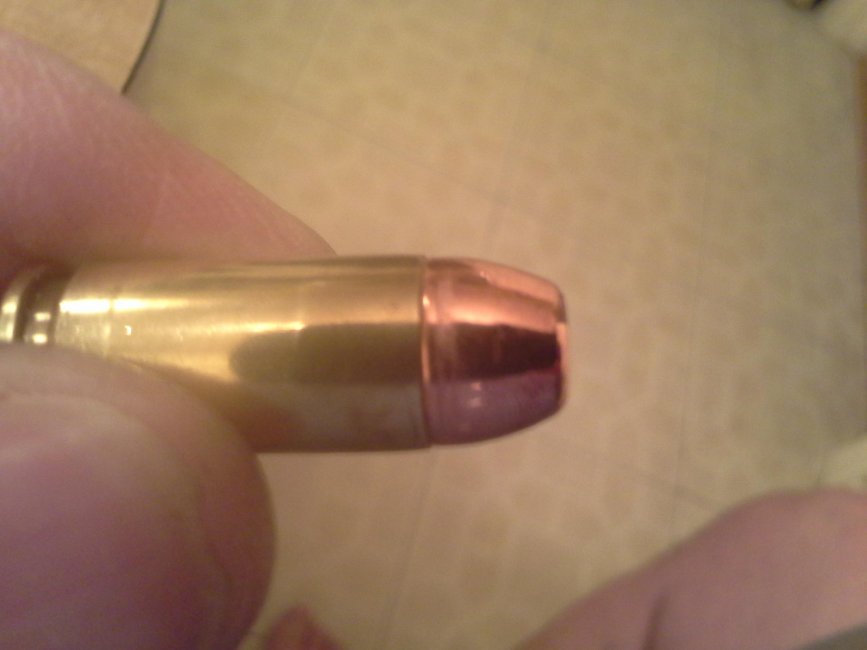I am loading 40 S&W and about 20 percent are not passing the Wilson gauge test. I am using 4.2 grains of Titegroup with Berry's 180 grain bullets. I am concerned about crimping too much and causing excess pressure in the case. Every round that fails has a pressure ring in the copper. (see attached photo)
 I seat the bullet for an over all length of 1.127 to 1.131 (1.135 is max according to Lee's manual.)
I seat the bullet for an over all length of 1.127 to 1.131 (1.135 is max according to Lee's manual.)
Any help will be appreciated. I hate to keep having to unload all these rejects.
 I seat the bullet for an over all length of 1.127 to 1.131 (1.135 is max according to Lee's manual.)
I seat the bullet for an over all length of 1.127 to 1.131 (1.135 is max according to Lee's manual.)Any help will be appreciated. I hate to keep having to unload all these rejects.






